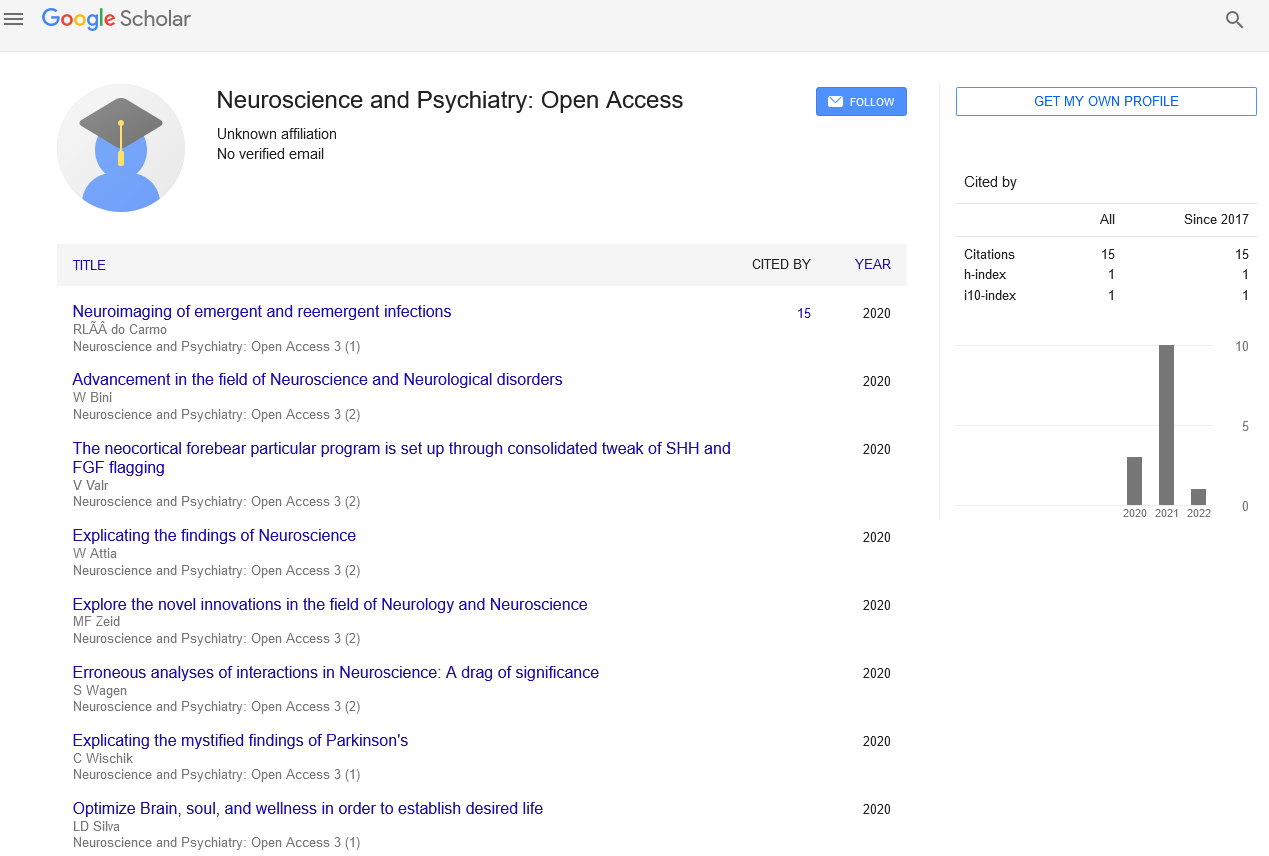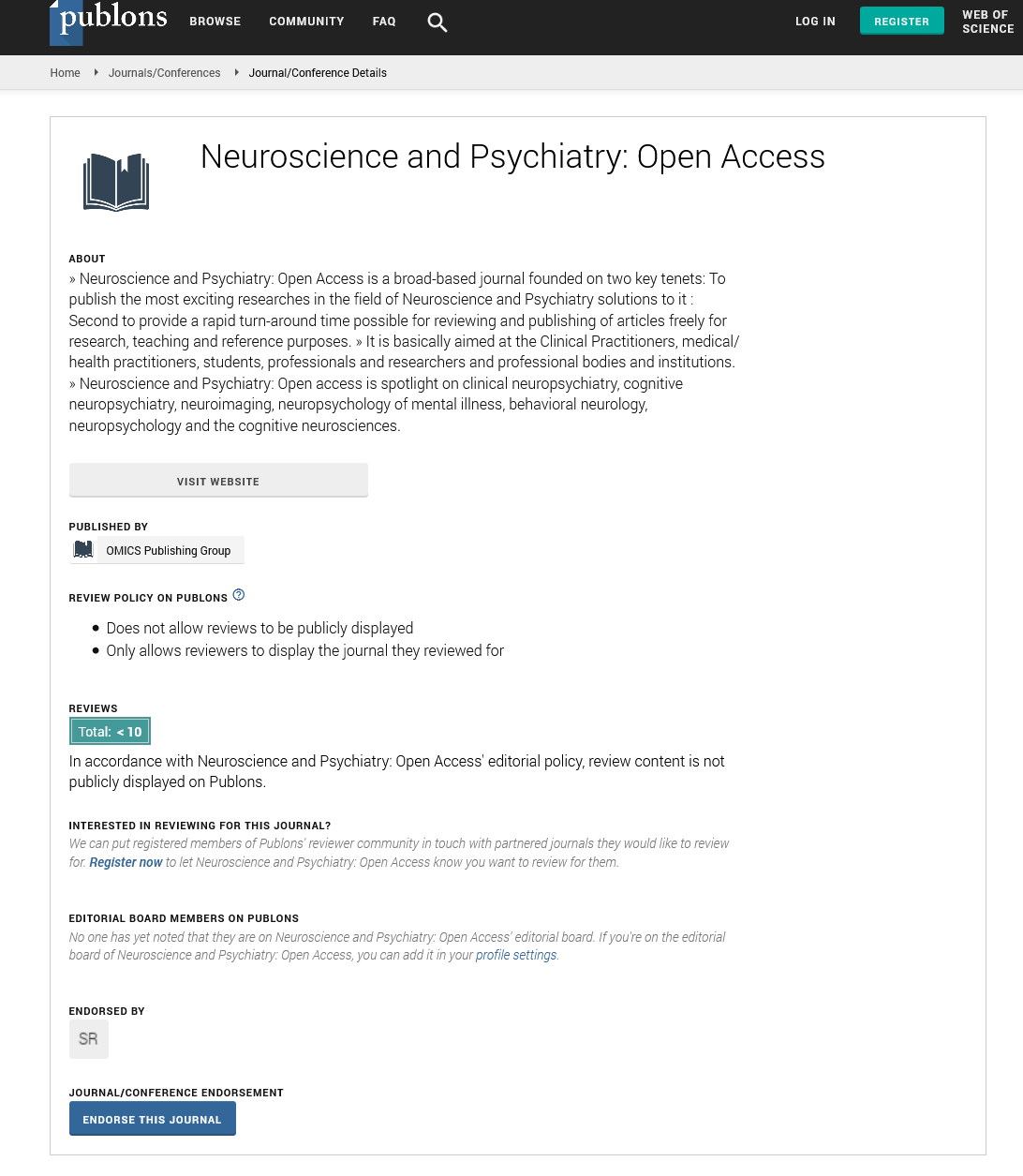Short Article - Neuroscience and Psychiatry: Open Access (2018) Volume 1, Issue 1
Tracing the effects of epigenetic factors on midface growth, upper airway collapse and intermittent Hypoxia
David Zimmerman
TMJ & Sleep Therapy Centre, New Zealand
Abstract
Most primary health issues are combined.
The primary issues created by early embryonic exposure to sugar, tobacco and/or alcohol are (1) a smaller midface, resulting impairment of the upper respiratory tract means changes in breathing gas-flows and (2) by repositioning the mandible its bilaminar zone compression results in a nociceptive barrage into the nucleus of the solitary tract overwhelming the central nervous system with subclinical pain and carries the tongue into the throat frequently. Such impairment is resultant from these at least one of these three epigenetic factors expelling Neural Crest cells in favour of slower growth via HOX genes.
The combination of these two seemingly benign processes creates systemic inflammation, via intermittent hypoxia as the tongue is more frequently in the pharynx. I.H./systemic inflammation is the substrate for many human disorders.
An overwhelming afferent nociceptive level from the TMJ into the spinal cord is sub-threshold failing to trigger cognitive realisation thereby denying the person the ability to communicate it as ‘pain’. Without this expression clinicians fail to acknowledge it.
The creation of a narrowed and more collapsible upper airway demanding postural adaptions to regain airway patency adversely load the skeletal and neuromuscular system coupled with systemic inflammation, sponsors many of the body’s degenerative diseases.
The OPERRA study (1, 2) demonstrates that you can’t have one without the other. By generating an impairment of the second brachial arch and less so the third brachial arch, there is an immediate mismatch between jaws. Exploring these two paths in more detail shows compression of the blood vessels in the jaw joint, highly loaded with type IV nociceptors can overwhelm the cordal central nervous system particularly in the Nucleus of the Solitary Tract which is a hub for afferent nociception.
Epigenetic changes resulting from exposing embryos to a trio of tobacco alcohol and sugar are first seen in the second half of the 1800’s. Concurrent with the rise in various pathologies, like foetal alcohol but specifically type II diabetes and the broad range of cardiovascular change came with the increase in agricultural production volumes of tobacco alcohol and sugar.
The changes in gas flow, spark considerable brain anxiety but is frequently missed.
Treatment is usually symptomatic with incomplete and non-durable outcomes.
Much of Western medicine is symptom-only treatment and reflected in mediocre success rates
In behavioural medicine (Freeman and Bonuck/ALSPAC 2002 -) (3, 4)who show that when babies around 6 months of age can mouth breathe, those who snored, mouth-breathed and breath-holding and persisted in this until 4 years old all went onto display socialising, learning (poor focus) less able to make and retain friendships, all issues of developmental importance in pre-teens. Heron and Butler (5) showed that a high percentage of snoring – non-obese 12 year old boys suffered nocturnal enuresis and estimated 150,00 such were in UK in 2000. How are these typically treated?
The next milestone reported is for 3 year olds, arguably as they are compliant enough to cooperate, but this group showed – in snorers – irrespective of obesity, demonstrated early signs of both arteriosclerosis (6-9) and of systemic inflammation. [Gozal Lee, Bodini and many others]. Perhaps the most sobering is 2018 Macey, Khierandish-Gozal’s et-al’s paper showing cortical changes in non-obese snoring juveniles. (10)
These issues confirm that intermittent hypoxia is critical in a diagnosis pattern. The American Academy of Pediatrics calls for all children to be screened for sleep and sleep-disordered-breathing problems. Sir Peter Gluckman Founder of the Liggins Institute Auckland New Zealand pointed out how changes made have generationally –impacting unintended adverse consequences. These epigenetic changes move from Phenotype to Genotype and if both parents snore, so will all the children compounding the health risks posing short-term and long term questions for all involved in a healthy society.
The neurological consequences are less envisioned in a coherent intact manner. The entrapped, normal sized mandible, specifically the condyles are nourished by the blood vessels in the bilaminar zone which are heavily populated with type IV nociceptors which when compressed generate massive – overwhelming afferent signalling volumes into the Trigeminal Ganglion and onto the spine, particularly the nucleus of the solitary tract. Here they interact with similar nociceptive signalling from baroceptors of the aorta and pulmonary systems. When the pharynx is closed to inhalation diaphragmatic action results in halving the thoracic pressure and hyper-filling of the atrium. The nett is an overwhelming of the body’s management systems. There are plainly two of the primary stressors, pain and air, both delivered on the day of birth.
Yet the professions remain stubbornly resistant to or wilfully oblivious to such calls, a statement that may appear argumentative, but Dr. James Mold’s study of U.S. primary care clinicians showed electronic records of a large group of patients, over 90% presented with a sleep-linked issue but only a very small fraction were discussed and an even smaller fraction of those was acted upon.
It is clear that hypertension is strongly linked to OSA/SDB (11, 12) if not directly caused by a mixture of alkalising body fluids, stimulating the cortisol production (13) metabolic and HPA axis change, the inflammatory cascade (9), sponsoring loss of integrity in endothelial tight junctions both in the body soma and in the brain (14-18) is it not time to include these issues in teaching? It is sobering to have to argue with a governing body who, even when offered these data, resolutely remains intransigent and entrenched in a pre-set program making a mockery of the claim of being evidenced based.
References
- Sanders AE, Essick GK, Fillingim R, Knott C, Ohrbach R, Greenspan JD, et al. Sleep apnea symptoms and risk of temporomandib
- Sanders AE, Akinkugbe AA, Bair E, Fillingim RB, Greenspan JD, Ohrbach R, et al. Subjective Sleep Quality Deteriorates Before Development of Painful Temporomandibular Disorder. J Pain. 2016;17(6):669-77.
- Bonuck K, Freeman K, Chervin RD, Xu L. Sleep-disordered breathing in a population-based cohort: behavioral outcomes at 4 and 7 years. Pediatrics. 2012;129(4):e857-65.
- Freeman K, Bonuck K. Snoring, mouth-breathing, and apnea trajectories in a population-based cohort followed from infancy to 81 months: a cluster analysis. Int J Pediatr Otorhinolaryngol. 2012;76(1):122-30.
- Butler RJ, Heron J. The prevalence of infrequent bedwetting and nocturnal enuresis in childhood. A large British cohort. Scand J Urol Nephrol. 2008;42(3):257-64.
- d g. C-Reacitve Protein i and OSA in Children. In: Bhattacharjee GDK-GL, editor.: Frontiers in Bioscience; 2012b.
- Bhattacharjee R, Kim J, Kheirandish-Gozal L, Gozal D. Obesity and obstructive sleep apnea syndrome in children: a tale of inflammatory cascades. Pediatr Pulmonol. 2011;46(4):313-23.
- Kharitonov SA, Barnes PJ. Exhaled markers of inflammation. Curr Opin Allergy Clin Immunol. 2001;1(3):217-24.
- Goldbart AD, Krishna J, Li RC, Serpero LD, Gozal D. Inflammatory mediators in exhaled breath condensate of children with obstructive sleep apnea syndrome. Chest. 2006;130(1):143-8.
- Macey PM, Kheirandish-Gozal L, Prasad JP, Ma RA, Kumar R, Philby MF, et al. Altered Regional Brain Cortical Thickness in Pediatric Obstructive Sleep Apnea. Front Neurol. 2018;9:4.
- Guilleminault C, Pelayo R, Leger D, Clerk A, Bocian RC. Recognition of sleep-disordered breathing in children. Pediatrics. 1996;98(5):871-82.
- Padzys GS, Omouendze LP. Temporary forced oral breathing affects neonates oxygen consumption, carbon dioxide elimination, diaphragm muscles structure and physiological parameters. Int J Pediatr Otorhinolaryngol. 2014;78(11):1807-12.
- Bozic J, Galic T, Supe-Domic D, Ivkovic N, Ticinovic Kurir T, Valic Z, et al. Morning cortisol levels and glucose metabolism parameters in moderate and severe obstructive sleep apnea patients. Endocrine. 2016;53(3):730-9.
- Vlahandonis A, Walter LM, Horne RS. Does treatment of SDB in children improve cardiovascular outcome? Sleep Med Rev. 2013;17(1):75-85.
- Loffredo L, Zicari AM, Occasi F, Perri L, Carnevale R, Angelico F, et al. Endothelial dysfunction and oxidative stress in children with sleep disordered breathing: role of NADPH oxidase. Atherosclerosis. 2015;240(1):222-7.
- Kheirandish-Gozal L, Bhattacharjee R, Kim J, Clair HB, Gozal D. Endothelial progenitor cells and vascular dysfunction in children with obstructive sleep apnea. Am J Respir Crit Care Med. 2010;182(1):92-7.
- Gozal D. Sleep, sleep disorders and inflammation in children. Sleep Med. 2009;10 Suppl 1:S12-6.
- Kim J, Gozal D, Bhattacharjee R, Kheirandish-Gozal L. TREM-1 and pentraxin-3 plasma levels and their association with obstructive sleep apnea, obesity, and endothelial function in children. Sleep. 2013;36(6):923-31.


